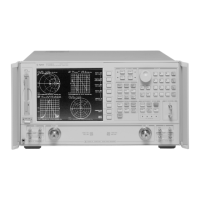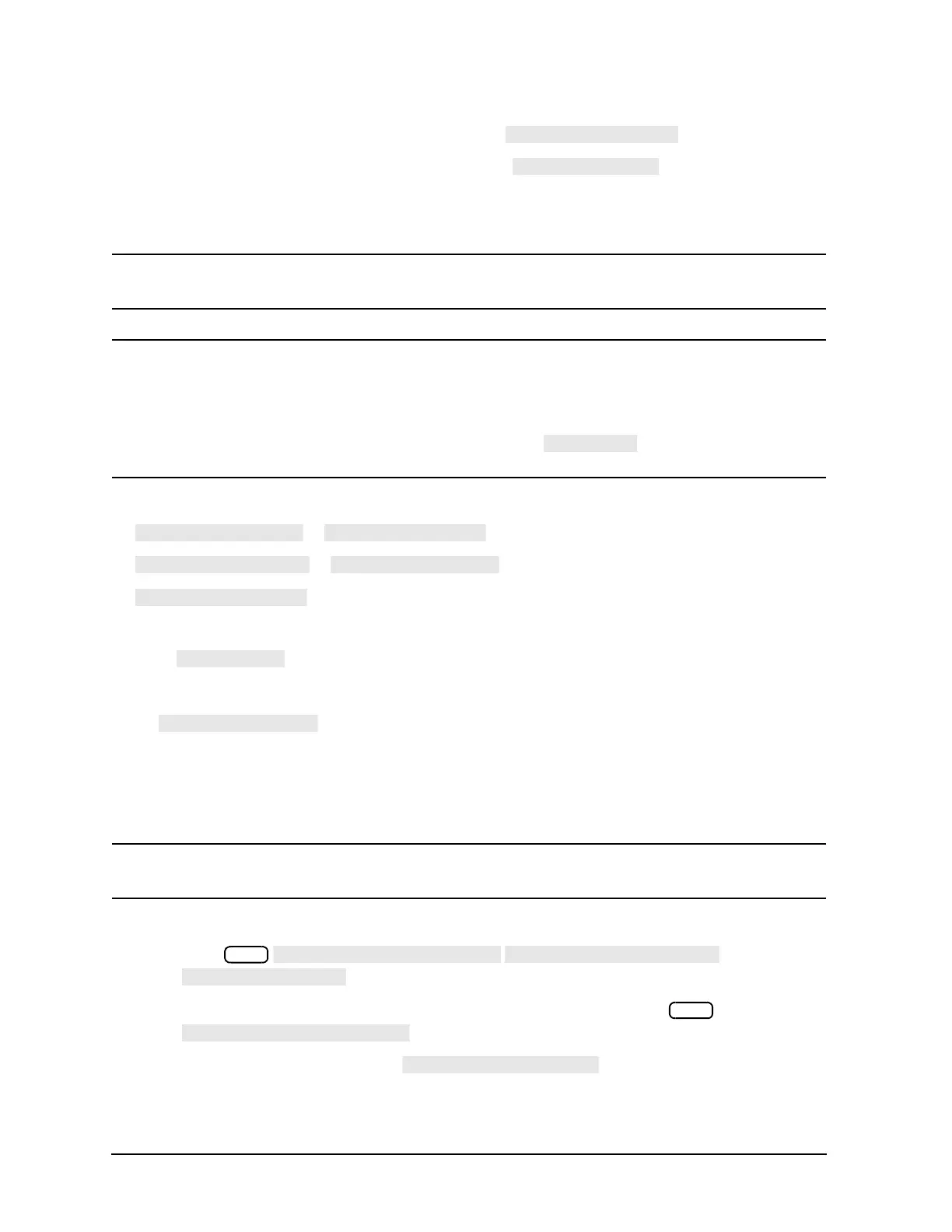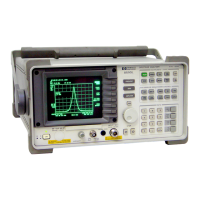6-24
Calibrating for Increased Measurement Accuracy
Enhanced Frequency Response Error Correction
13. To compute the reflection correction coefficients, press .
14. To start the transmission portion of the correction, press .
15. Make a "thru" connection between the points where you will connect your device under test as shown
in
Figure 6-7.
NOTE Include any adapters or cables that you will have in the device measurement. That is,
connect the standard device where you will connect your device under test.
NOTE The thru in most calibration kits is defined with zero length. The correction will not work
properly if a non-zero length thru is used, unless the calibration kit is modified to change the
defined thru to the length used. This is important for measurements of non-insertable
devices (devices having ports that are both male or both female). The modified calibration kit
must be saved as the user calibration kit, and the
softkey must be selected
before the calibration is started.
16. To measure the standard, when the trace has settled, press:
or
or
The analyzer underlines the softkey label after it makes each measurement.
17. Press and select from the following two options:
❏ If you will be measuring devices with a dynamic range less than 90 dB, press:
❏ If you will be measuring devices with a dynamic range greater than 90 dB, follow these steps:
a. Connect impedance-matched loads to the test ports. Include the adapters that you would include
for your device measurement.
NOTE If you will be measuring highly reflective devices such as filters, use the test device,
connected to the reference plane and terminated with a load, for the isolation standard.
b. Activate at least four times more averages than desired during the device measurement.
c. Press
.
d. Return the averaging to the original state of the measurement, and press
.
18. To compute the error coefficients, press .
The analyzer displays the corrected measurement trace. The analyzer also shows the notation Cor at

